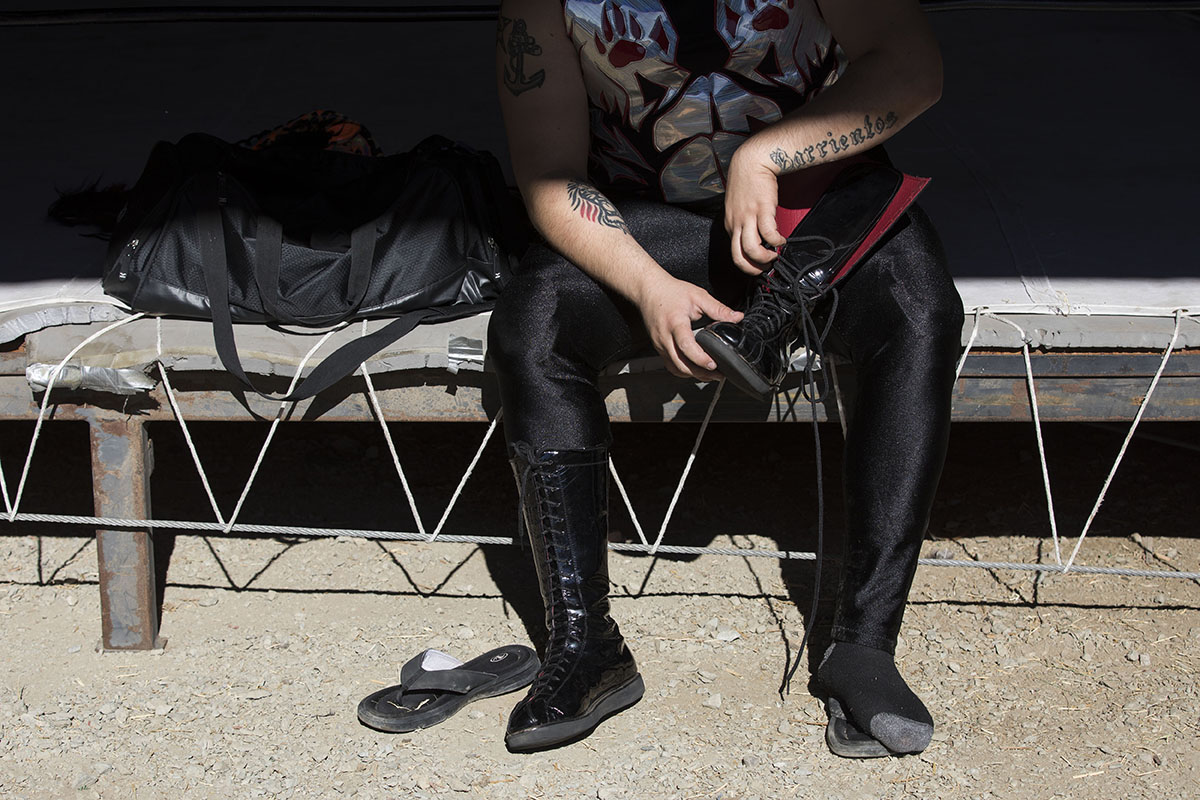This Masked Man Makes an Extra $200/Week as a Mexican Wrestler, or Luchador
Every superhero needs a secret identity.
Just ask Motros Jungle.
At 6 years old, he was captivated by his heroes, the masked Mexican wrestlers known as luchadores.
Now grown, the San Diego man has been living out his childhood dream for the past five years by transforming into his alter ego as a side hustle.
“You go from being just a regular average Joe to becoming a superhero as soon as you put the mask on,” he says.
Motros Jungle’s real name remains a secret in the tradition of luchadores who went before him.
“The mask is sacred because I try to follow in the footsteps of all my heroes… all those guys, you never saw them without their mask,” Motros Jungle says. “And to me, if I want to be just like them, I will perform just like them, and I will keep my identity secret.”
Although his fans may imagine he spends his days practicing high-flying moves, Motros Jungle works a full-time job “as a grease monkey.”
On the weekends, he steps into the ring to participate in up to three matches, earning around $200 total.
That income doesn’t include the proceeds from merchandise such as shirts, stickers, buttons and, of course, masks.
“Masks go for $20, and they sell pretty well,” Motros Jungle says. “You can make anywhere from like $200 to $500.”
But the luchador tradition means much more than dollar signs for Motros Jungle.
“At the end of the day, you don’t really count how much you make because it all gets invested right back into wrestling,” he says. “I don’t do this for the money. I do it because it fulfills me as a person.”
Ever wonder how you could pursue your childhood dream? Read on to find out how Motros Jungle did it.
What Is a Luchador?

Although Hollywood has its own interpretation of the art — think the 2006 Jack Black movie “Nacho Libre” — lucha libre traces its roots back Mexican wrestling that started as early as the 1840s.
Known for its colorful costumes and acrobatic moves, lucha libre most closely resembles the WWE’s professional wrestling in the United States.
Although his matches are mostly north of the border, Motros Jungle started by training in Mexico for about 1 ½ years. “Even now, I still go every now and then just to get some authentic lucha libre training,” he says.
Rules of the Ring
As in most wrestling competitions, you win in lucha libre by pinning your opponents, knocking them out of the ring or forcing them to submit.
But like its U.S. counterpart, much of the wrestling is choreographed to promote a continuing storyline of the participants, who playact much of their fighting. So even though Motros Jungle trains constantly to maintain the athleticism required, he’s working just as much on communication and safety techniques.
“You can look like you’ve been carved out of stone, and you can step in the ring and you can flop,” he says. “You got to talk and communicate with the person that you’re working with.
“If you do not have the safety of it down, if you do not have the proper technique of it down, then there’s just no way you’re going to be successful at this.”

Even with all the precautions in place, Motros Jungle says he still sustains at least minor injuries in every match.
“There’s no way you walk out of a match without feeling a little sore, having a couple of bruises and scratches here and there,” he says. “Luckily I’ve only been severely injured twice in my wrestling career. I’ve broken my ribs, I’ve broken my left arm.”
The most important thing you can have as you pursue your dream job is courage, according to Motros Jungle.
“You got to not be afraid of taking those risks,” he says. “You got to make the jump.”
For Motros Jungle, the fulfillment of a childhood fantasy — and the fans who follow his career — make his side gig worth more than any amount of money.
“I’m living my dream every time I set foot into this ring,” he says. “I do it for the roar of the crowd.”
Tiffany Wendeln Connors is a staff writer and Teyonna Edwards is a video producer at The Penny Hoarder.
















